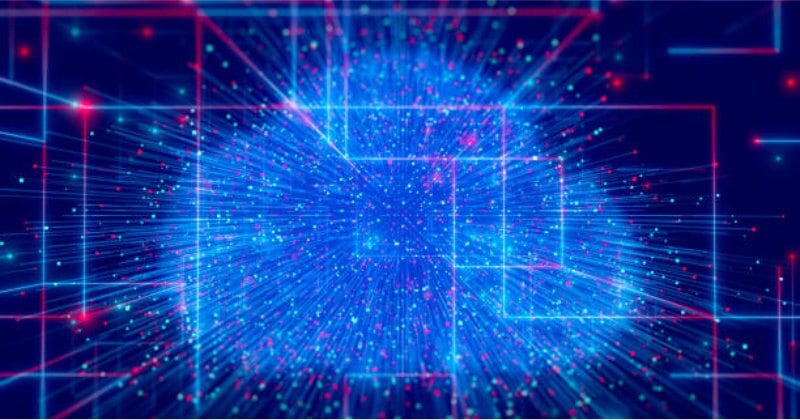3D printing is revolutionizing how products are designed, manufactured, and customized. Whether you're a beginner, maker, or business owner, this comprehensive guide explains how additive manufacturing works, what printers to choose, and how to explore its growing opportunities.

I. What Is Additive Manufacturing?
Additive Manufacturing (AM) is a production process where material is added layer by layer to build a three-dimensional object based on digital design data. It stands in stark contrast to traditional subtractive manufacturing (like milling or cutting), which removes material to form parts.
3D printing is the most common form of AM. It's known for enabling fast prototyping, reducing waste, supporting complex designs, and enabling highly customizable, on-demand production. From prosthetics to aerospace components, its real-world applications are growing rapidly.
II. How Does 3D Printing Work?
The basic process of 3D printing involves several key stages that convert a digital idea into a tangible product:
1. Designing the Model: CAD and AI Tools
The process begins with a digital 3D model, typically created using free CAD software for 3D printing such as Tinkercad, Fusion 360, or Blender. Recent innovations include AI-generated 3D models, where tools like Kaedim or DreamFusion use artificial intelligence to convert 2D sketches or text into detailed 3D geometry.
2. Slicing the Model
Before printing, the model must be sliced into thin layers using a slicer tool (e.g., Cura, PrusaSlicer). The 3D slicer settings guide helps configure layer height, infill density, temperature, support structures, and more, producing G-code instructions for the printer.
3. The Printing Process
Once sliced, the file is loaded into a 3D printer, and the object is built layer-by-layer using one of the following technologies:
FDM (Fused Deposition Modeling) – Ideal for hobbyists, uses thermoplastics like PLA and ABS.
SLA (Stereolithography) – Uses UV light to cure liquid resin; popular in dental and jewelry sectors.
SLS (Selective Laser Sintering) – Fuses powder material using a laser; great for industrial prototyping.
Metal 3D Printing (SLM/DMLS) – Melts fine metal powders for aerospace and automotive parts.
4. Post-Processing
Post-processing may include removing supports, sanding, polishing, or curing resin under UV light. In high-precision industries like medical or aerospace, surface treatment and dimensional accuracy are critical.
III. Types of 3D Printers and Which One to Choose
Choosing the right 3D printer depends on your goals—whether you're a hobbyist, small business, or industrial manufacturer.
Best 3D Printer for Beginners
If you're new to 3D printing, consider machines with a good balance of usability, price, and community support:
Creality Ender 3 V3 SE
Prusa MINI+
Anycubic Kobra Go
These models feature intuitive interfaces, strong online communities, and YouTube tutorials that make them perfect for learning.
Large Format 3D Printers
Large format 3D printers are ideal for printing furniture, sculptures, prototypes, or 3D printed house construction components. Leading models include:
Modix BIG-60 V4
Raise3D Pro3 Plus
Creality CR-M4
They offer build volumes over 400mm in each dimension and are used by architects and product developers.
Industrial 3D Printer Brands
For advanced manufacturing, industrial 3D printer brands offer unmatched reliability and material support. Notable players include:
| Brand | Technologies Used | Industry Applications |
|---|---|---|
| Stratasys | FDM, PolyJet | Aerospace, Automotive |
| EOS | SLS, Metal 3D Printing | Aerospace, Dental, Tooling |
| HP | Multi Jet Fusion (MJF) | Production-grade polymer parts |
| 3D Systems | SLA, DLP, SLS | Dental, Medical, Industrial |
These are common in automotive 3D printing parts, dental 3D printing solutions, and other demanding sectors.
IV. 3D Printing Applications Across Industries
3D printing is now integral to many industries. Its ability to create complex geometries, reduce weight, and minimize tooling makes it invaluable.
| Industry | Use Cases | Common Materials & Methods |
|---|---|---|
| Healthcare | 3D printing for prosthetics, surgical models, implants | SLA resins, TPU, PEEK |
| Aerospace | Lightweight components, heat-resistant parts | Titanium, Aluminum, SLS, SLM |
| Automotive | Custom car parts, tooling, fixtures | ABS, Nylon, Carbon-fiber blends |
| Construction | 3D printed house construction using concrete | Cementitious materials, FDM |
| Dental | Dental 3D printing solutions like crowns, bridges | Biocompatible resins, DLP |
| Consumer Goods | Eyewear, shoes, accessories | TPU, SLA, Polyamide |
These examples highlight the versatility of 3D printing across sectors.
V. 3D Printing Services and Tools
Even without owning a printer, anyone can turn digital designs into physical products through online or local services.
3D Printing Services Near Me
Search for 3D printing services near me to find local shops offering printing, design, and consultation. Many local makerspaces, libraries, and print hubs cater to hobbyists and small businesses.
Print-on-Demand 3D Services
Online platforms like Shapeways, Hubs, and Treatstock offer print-on-demand 3D services. Upload your design, choose materials and finishes, and receive the product by mail.
3D Printing Cost Calculator
Use a 3D printing cost calculator to estimate pricing based on:
Material cost per gram
Print time and energy usage
Machine wear and labor
Popular tools include PrintCalc and AstroPrint's estimator.
Recommended Tools and Software
| Category | Recommended Tools | Purpose |
|---|---|---|
| CAD Design | Fusion 360, Tinkercad, FreeCAD | Creating 3D models |
| AI Modeling | Kaedim, Daz 3D, DreamFusion | Generate 3D assets from text |
| Slicing Software | Cura, PrusaSlicer, Lychee | Slicing models into layers |
| Model Repositories | Thingiverse, MyMiniFactory | Download open-source designs |
VI. Education and Community
Learning and sharing are at the heart of the 3D printing movement.
3D Printing Classes Near Me
To get hands-on training, look for 3D printing classes near me offered at local technical colleges, maker labs, or workshops. These can accelerate your learning and help avoid early mistakes.
3D Printing YouTube Channels
YouTube is a goldmine for tutorials and reviews. Top 3D printing YouTube channels include:
Maker's Muse – Design tips, printer reviews
3D Printing Nerd – Tutorials for all skill levels
Thomas Sanladerer – Deep dives into slicer settings and firmware
Open-Source 3D Printer Plans
Explore open-source projects like RepRap or Voron for DIY 3D printer kits. These communities offer open-source 3D printer plans with active development and modification guides.
VII. How to Start a 3D Printing Business
3D printing offers a wide range of business opportunities—from services and sales to digital platforms and franchises.
How to Start a 3D Printing Business
Steps to launch your business:
Identify a niche – Dental models, cosplay props, engineering parts, etc.
Choose your equipment – Entry-level or industrial depending on clients
Create an online presence – Website, Etsy store, or Shopify
Market your services – Leverage social media and local ads
3D Printing Franchise Opportunities
Rather than starting from scratch, consider joining 3D printing franchise opportunities such as:
Xometry Partner Network
Sculpteo Reseller Programs
Fast Radius fulfillment hubs
Franchises provide brand recognition and a customer base.
Sell 3D Printed Products Online
You can sell 3D printed products online through:
Etsy (custom items, cosplay gear)
Amazon Handmade (functional parts)
Your own website using WooCommerce or Shopify
3D Printing Side Hustle Ideas
Some low-investment business ideas include:
Custom lithophanes and lamps
Niche parts (e.g., drone frames)
Replacement household parts
Print-on-demand partnerships
VIII. Future Trends in 3D Printing
The future of additive manufacturing is driven by automation, sustainability, and intelligent design.
AI-generated 3D models will shorten design cycles and reduce human error.
Recycled and sustainable materials are gaining traction to lower environmental impact.
Robotics + 3D printing is being used for on-site 3D printed house construction.
Smart factories with end-to-end automated printing, curing, and packaging systems are emerging.
IX. Frequently Asked Questions
Q1: What's the best 3D printer for a complete beginner?
Start with the Creality Ender 3 or Anycubic Kobra series. They're affordable and have strong community support.
Q2: How much does 3D printing cost?
Costs vary, but basic prints can be as low as $1–$10. Use a 3D printing cost calculator for accurate estimates.
Q3: What materials are safe for home use?
PLA is the safest and most user-friendly. Some resins can be toxic and require ventilation and UV protection.
Q4: Is 3D printing profitable?
Yes—many use it as a 3D printing side hustle or full business. Success depends on niche, quality, and marketing.
Q5: How do I find local services or classes?
Google “3D printing services near me” or “3D printing classes near me” to discover nearby options.
Conclusion
3D printing is no longer a futuristic concept—it's a practical, accessible, and innovative technology that's reshaping industries and enabling new businesses. With the right tools, education, and direction, anyone can begin designing, prototyping, or profiting from additive manufacturing. Whether you're printing a prototype or launching a service, the time to start is now.




